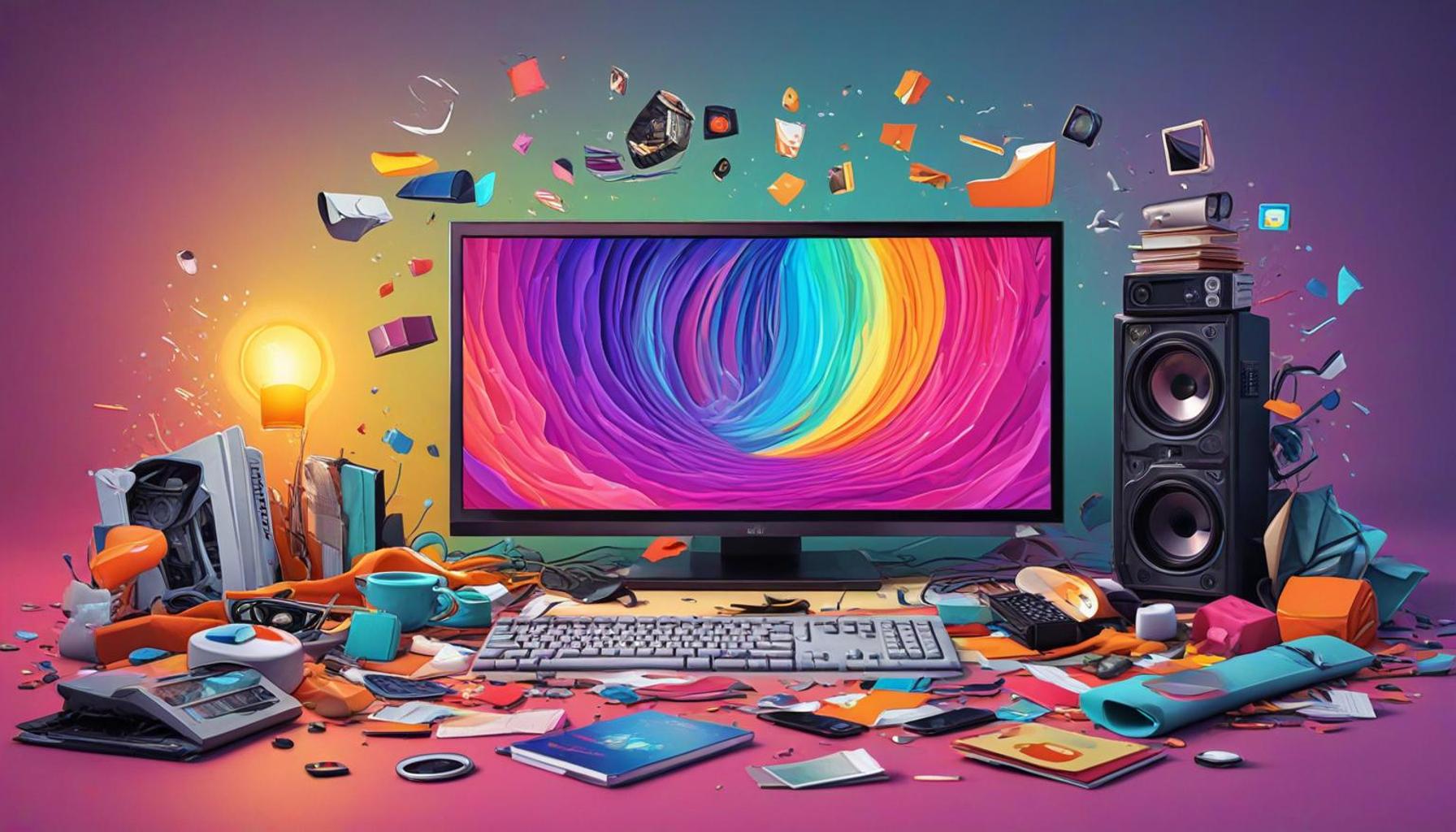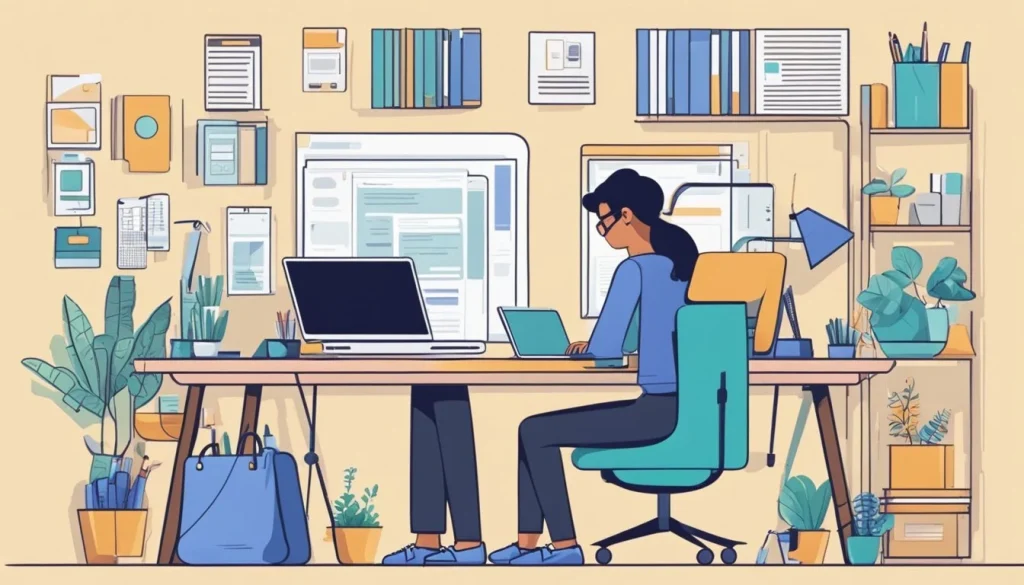Decluttering Media Channels: How to Simplify Your Content Consumption and Reduce Information Overload

Understanding Information Overload
In recent years, it has become increasingly common to grapple with the sheer volume of information at our fingertips. Information overload occurs when the quantity of available data exceeds our cognitive processing capacity, leading to stress, confusion, and decision paralysis. A notable study by the Pew Research Center highlighted that 62% of Americans feel overwhelmed by the amount of news they receive. This scenario has been exacerbated by the rise of social media platforms, notification-heavy smartphones, and 24/7 news cycles, where updates are incessant and often sensationalized.
Why Decluttering Media Channels is Essential
By decluttering your media channels, you are not just reducing noise; you are intentionally curating the information you consume. This has profound psychological benefits, allowing you to engage more deeply with valuable content that genuinely resonates with your interests and values. The aim is to enhance your focus and mental clarity through more manageable information streams.
Key Aspects to Consider
- Identify Your Priorities: Reflect on what truly matters to you. Is it staying informed about local or national news? Do you want to enhance your skills through educational podcasts? Creating a list of your content preferences can help you filter the overwhelming influx.
- Limit Your Sources: Instead of following multiple news outlets and social media platforms, select a handful of trusted voices. For instance, subscribe to a reliable daily newsletter, listen to a credible podcast, and follow one or two thought leaders on platforms like Twitter or LinkedIn. This way, you can stay updated without being bombarded.
- Set Boundaries: Designate specific times during your day for media consumption. Perhaps allocate an hour in the morning to catch up on the news while enjoying your morning coffee, or limit the time spent scrolling through your social media feeds. This approach can foster a more mindful relationship with content, reducing the tendency for mindless scrolling that so often leads to information overload.
Reclaiming Your Time and Energy
Implementing these strategies can have significant benefits. Studies have shown that people who practice regular digital detoxes report lower stress levels and improved overall well-being. By being selective about your media interactions, you not only reclaim your time but also position yourself to absorb and reflect on the content that enriches your life.
As you embark on this journey toward decluttering your media channels, remember that the goal is to harness the benefits of technology without letting it overwhelm you. In the end, it’s not just about consuming less information; it’s about consuming thoughtfully and effectively.
DISCOVER MORE: Click here to learn how to maximize your space

Strategies for Effective Media Decluttering
With the relentless flow of information bombarding us from all angles, it becomes essential to develop effective strategies for decluttering our media channels. This process is all about creating a personalized media experience that serves our needs rather than overwhelming us. Implementing a few key strategies can transform how you consume content, leading to a more focused and meaningful interaction with information.
1. Analyze Your Current Consumption Habits
The first step towards decluttering is to conduct a thorough self-assessment of your current media consumption. Take note of how much time you spend on various platforms, the type of content you engage with, and how it makes you feel. Does scrolling through social media leave you anxious or uninspired? Or does your favorite podcast ignite passion and curiosity? Understanding your habits is the foundation for effective decluttering.
2. Create a Content Vision Board
Once you’ve evaluated your habits, it’s time to envision the content you truly want in your life. A content vision board can serve as a visual representation of your goals. Collect images, quotes, and articles that inspire you. This can help clarify your interests and guide your media choices. A vision board keeps your objectives front of mind, pushing you to seek out and engage with content that aligns with your values and aspirations.
3. Unsubscribe and Unfollow
After clearly identifying your interests, tackle the daunting task of unsubscribing from unnecessary newsletters and unfollowing irrelevant social media accounts. This can feel liberating, akin to clearing out a crowded closet. Go through your digital subscriptions and eliminate those that no longer serve a purpose. Set aside time to audit your email inbox and social media feeds regularly. This continuous upkeep will prevent the buildup of irrelevant content.
4. Employ Filtering Tools
In our technologically advanced age, numerous applications and tools exist to help you prioritize content. Consider employing filtering tools and platforms that aggregate news according to your preferences. For instance, apps like Feedly and Pocket allow you to curate articles and topics that interest you without all the distractions. These tools provide a streamlined experience to engage with preferred information while filtering out the excess noise.
5. Engage in Mindful Consumption
Finally, practice mindful consumption. Set aside a specific time each day dedicated to media engagement, ensuring that distractions are minimized. Techniques such as setting a timer for non-interrupted consumption can drastically reduce the impulse for excessive browsing. Beyond scheduling, focus on being fully present. Allow yourself to digest each piece of information rather than skimming through headlines.
Adopting these decluttering strategies can fundamentally reshape your content consumption experience. By prioritizing quality over quantity, you ultimately position yourself to engage with information that truly enriches your life. The immediate relief of reducing media clutter can lead to lasting benefits, fostering a clearer mind and a more balanced approach to content engagement.
Streamlining Your Digital Environment
In today’s fast-paced digital landscape, it’s easy to feel overwhelmed by the incessant flow of information. By decluttering your media channels, you can simplify your content consumption while reducing stress. Begin by evaluating the sources of information you engage with regularly. Are they serving your needs, or are they becoming distractions?
One effective method is to leverage subscription management tools. These allow you to curate the content you receive based on your interests. For instance, you can use tools like Feedly or Inoreader to organize newsletters, blogs, and articles that matter most to you. By doing so, you limit unnecessary notifications and focus on high-quality content that enhances your knowledge rather than dilutes it.
Another key strategy involves setting aside specific time blocks dedicated to media consumption. Instead of mindlessly scrolling through social media at any moment, allocate designated periods to check updates. This not only combats information overload but also encourages mindful engagement with content, allowing you to digest information more thoroughly.
A further aspect to consider is the implementation of content filtering. Many platforms allow you to customize what you see based on your preferences. By utilizing features like keyword filters and blocking certain categories, you can create a more personalized experience. This minimizes distractions and keeps your focus razor-sharp on what genuinely interests you.
The Role of Mindfulness in Media Consumption
Integrating mindfulness techniques can further enhance your content consumption habits. When engaging with media, practice being present. Reflect on how each piece of content makes you feel and whether it adds value to your life or drains your energy. This conscious approach can help you make wiser choices about what to consume.
Lastly, remember that it’s perfectly acceptable to take breaks from media entirely. Attaining a balance between consumption and downtime can reinvigorate your mental acuity, allowing you to return to your chosen content with renewed enthusiasm and fresh perspectives. By implementing these strategies, you pave the way for a more organized, fulfilling digital experience that ultimately leads to greater well-being.
| Category | Benefits |
|---|---|
| Subscription Management | Organizes and tailors your content feeds to relevant interests. |
| Time Blocking | Encourages focused engagement and reduces distractions. |
| Content Filtering | Personalizes your media experience, minimizing irrelevant information. |
DISCOVER MORE: Click here to learn about the 30-day decluttering rule</p
Creating Healthy Boundaries with Media
Once you embark on the journey of decluttering your media channels, the next step is to establish healthy boundaries around your content consumption. This proactive approach is essential in maintaining the clarity and focus you have worked hard to achieve. Boundaries not only enhance your well-being but also protect your mental space from the chaos that social media and incessant notifications can create.
6. Set Time Limits
Creating specific time limits for media consumption can be a game changer. Research has shown that individuals who actively monitor their daily media intake tend to experience reduced anxiety and improved concentration. Consider tools that allow you to track the time spent on apps and websites, such as screen time trackers on smartphones. Aim to limit the total hours dedicated to consuming content and allocate more to activities that foster creativity and personal growth.
7. Curate Daily Digest
Instead of aimlessly scrolling through various platforms, consider refining your approach to intake by creating a daily digest. This could be a scheduled hour during which you prioritize the news articles, podcasts, or videos you’ve earmarked from your earlier evaluations. By curating a set list, you ensure that you’re interacting with content that is meaningful and aligns with your goals, rather than absorbing everything that comes your way.
8. Batch Your Content Consumption
Batching your content consumption means dedicating blocks of time for specific media types. Designate one time for your daily news briefing, another for social media, and another for educational podcasts. This way, you can focus intensely on one type of consumption without distractions. For instance, setting aside 30 minutes each morning for news, followed by an hour for podcasts in the evening, creates a rhythm that can make your media habits more manageable.
9. Prioritize Sources of Information
Establishing a hierarchy of trusted sources is crucial in navigating the labyrinth of content available today. Start by determining the outlets and creators whose work resonates with your interests and values. Programs such as NPR or publications like The New York Times may offer digestible content that aligns with your aim for informed engagement, while lesser-known blogs or YouTube channels might offer unique perspectives. Ensure the sources you trust regularly deliver quality content, reducing the need to sift through less reliable information.
10. Create a No-Content Zone
Designating spaces and times as no-content zones can also aid in decluttering your media channels. For instance, consider banning devices from your dining table or bedroom. Establish times—like during family meals or before bedtime—where devices are turned off or put away. This allows for deeper connections with those physically present and supports mental peace as you wind down for rest. Satisfaction and relaxation can flourish when media is not constantly vying for your attention.
Understanding the Psychological Impact
As you work through these strategies, it’s vital to recognize the psychological impact of media overload. Studies indicate a direct correlation between excessive media consumption and increased levels of stress and anxiety. By implementing these decluttering techniques, not only do you streamline your content intake but also create a healthier mental environment. The art of simplifying your media landscape won’t just enhance how you consume information; it will foster a lifestyle that encourages sustainable engagement and genuine connection.
DIVE DEEPER: Click here to discover more
Conclusion
In our fast-paced digital world, the need for decluttering media channels has never been more pressing. The overwhelming flow of information can lead to cognitive overload, making it difficult to focus and engage with content that truly resonates. By taking actionable steps to simplify your content consumption, you pave the way for enhanced mental clarity and emotional well-being.
The strategies discussed—such as setting time limits, curating a daily digest, and establishing no-content zones—serve to create a structured approach to media intake. This not only safeguards your attention but allows you to prioritize content that aligns with your values and interests. Furthermore, recognizing the psychological impact of media overconsumption empowers you to take control and make informed choices about how and when you engage with content.
As you embark on this journey, remember that it’s not about completely tuning out the digital landscape but rather about cultivating a healthy relationship with it. Embrace the idea that by consciously minimizing distractions, you can maximize your capacity for genuine connections and creativity. As you practice these techniques, encourage your peers and loved ones to join you in this media decluttering movement. Together, you can build a community that prioritizes mental wellness and intentional living in an age of information overload. The path to simplified content consumption is not just a personal benefit—it’s a collective step toward a calmer, more balanced society.


